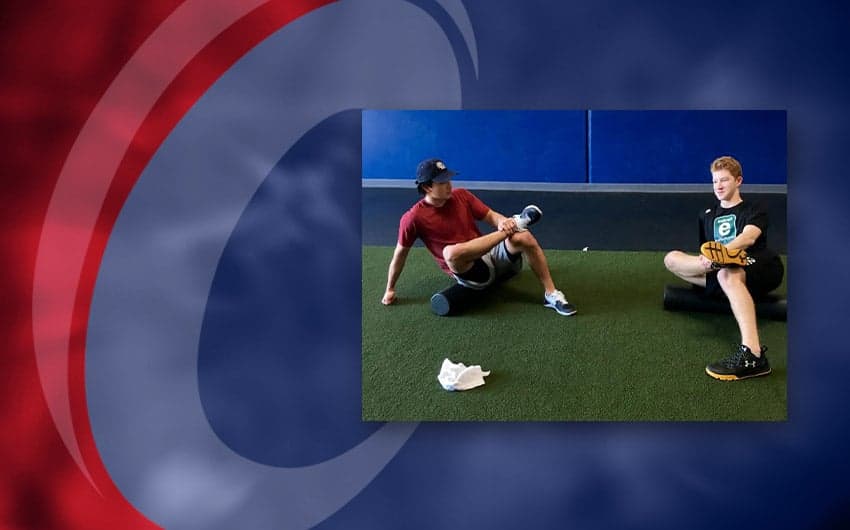Foam rolling is an aspect of recovery that goes hand in hand with training that has become a lot more common and popular in the last few years. Much more research has come out regarding static stretching as well. Foam rolling and stretching are essential for the modern-day athlete and individual to contribute to their success and helping with soreness/pain.
Some may wonder of the importance behind why they should foam roll and stretch—this is a great question. Essentially, foam rolling has been proven to loosen up the fascia, which surrounds individual muscles. It activates the muscles and forces them to loosen up and acts as a form of self-massage. As muscles are regularly trained, athletes will begin to experience soreness and tightness, which is normal. Static stretching then helps after foam rolling in order to get the full range of motion from the muscles that were just loosened up from using the foam roll. Therefore, foam rolling and static stretching are essential to the health and wellness of athletes.
Often, athletes can find themselves steering clear of foam rolls because they can cause temporary discomfort, or perhaps they haven’t been taught how to use one properly. One excuse for not stretching would be that it takes too much time and that individuals simply just don’t want to take time out of their day to do it. However, if someone takes just 10min out of their day to foam roll and stretch, it could make all the difference in terms of soreness, tightness, and even pain. It ought to be greatly emphasized by athletes’ trainers and coaches to incorporate these in as part of their everyday recovery.
In terms of the timing behind when someone should foam roll and stretch, it is best to do it right after workout and especially if the soreness continues. In addition, it is very beneficial on someone’s “rest” days in order to stimulate and loosen up the fascia of the muscles, as mentioned above. As for static stretching, this should be done after foam rolling post-workout as well. Static stretching is just as important as foam rolling and should be done after that because the muscles will be loosened up a bit more. Therefore, foam rolling and stretching should be included in each athlete’s recovery routine.
Taylor Rowden is a Strength Coach at Compete Sports Performance and Rehab in Lake Forest, California. Taylor graduated from the Master’s University with a degree in Kiniesiology with an emphasis on sports injury and exercise science. She was also a member of the Women’s Soccer Team.

